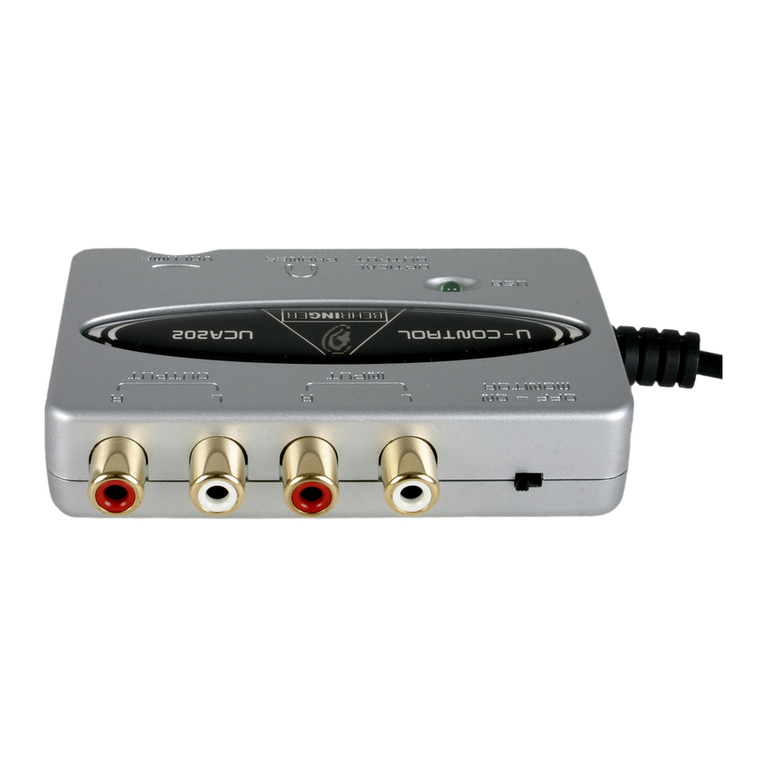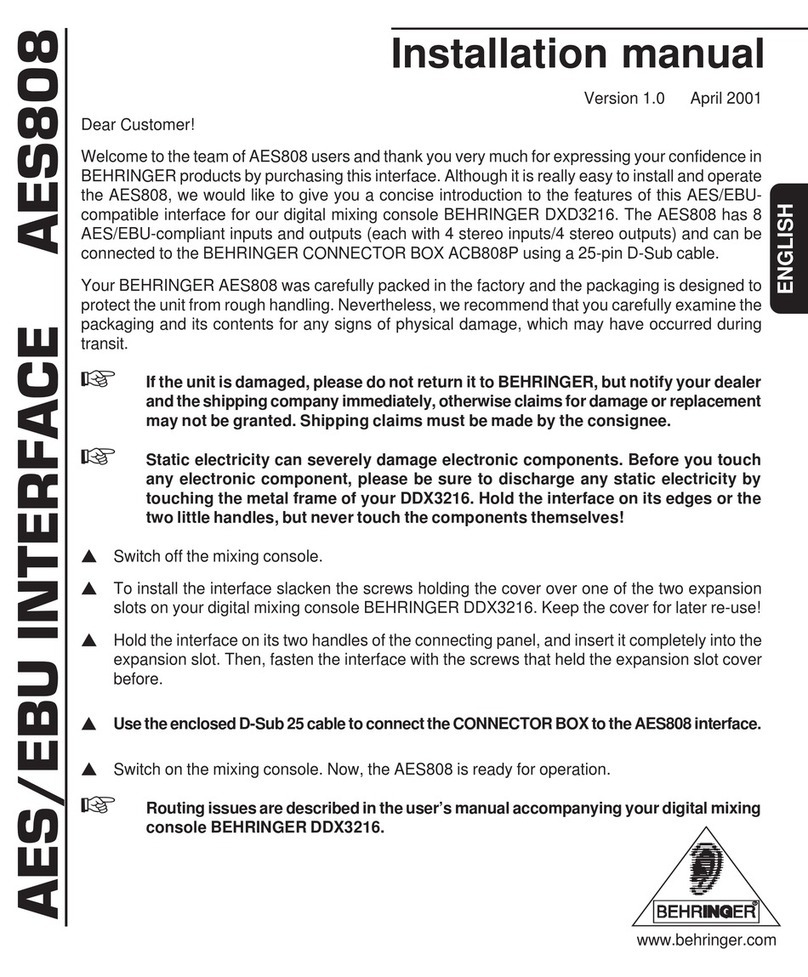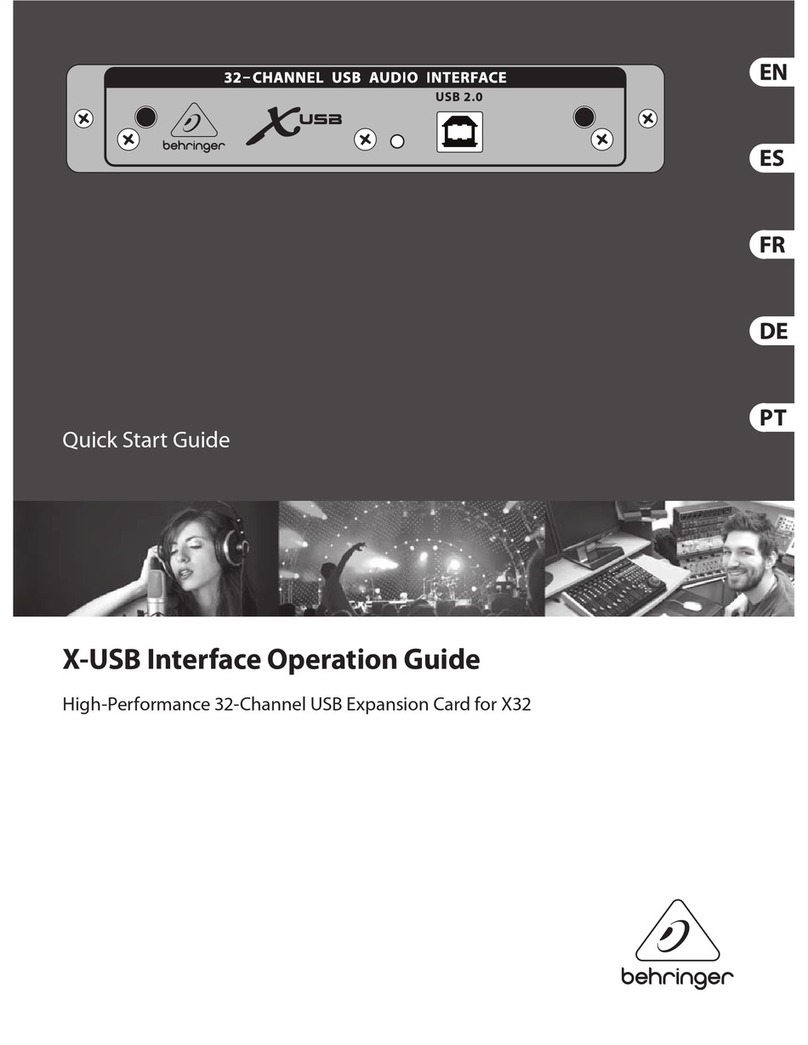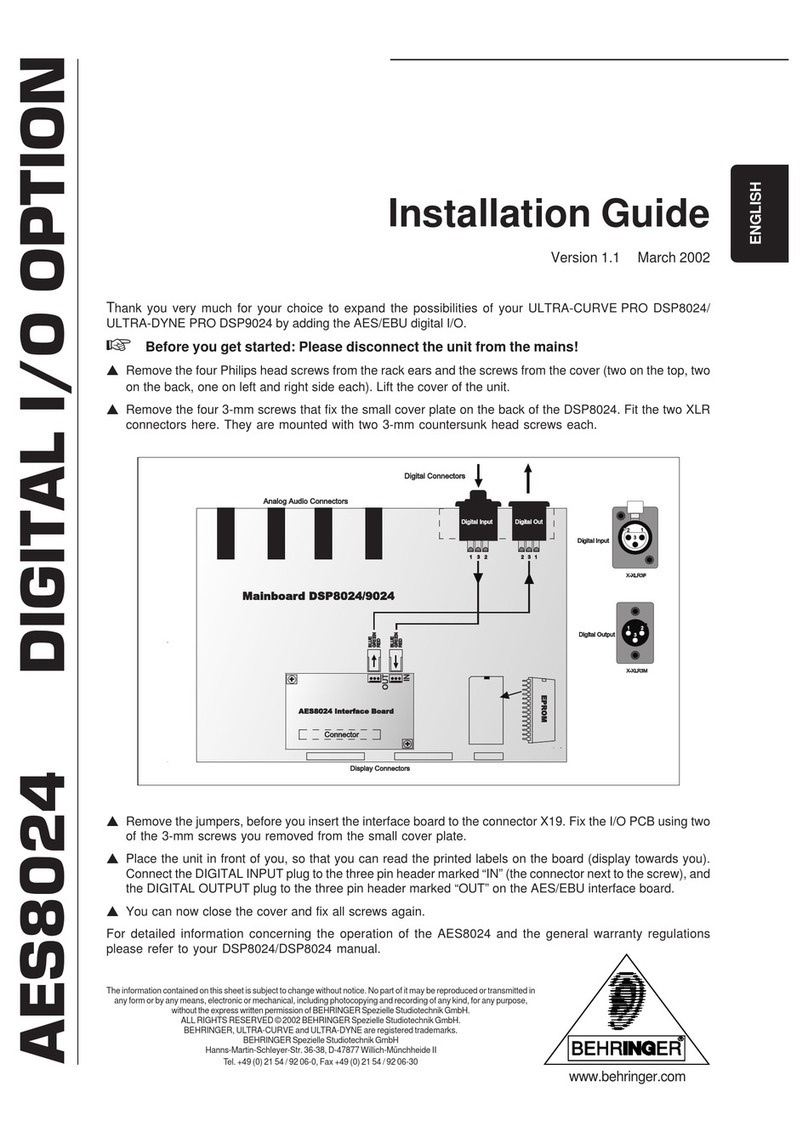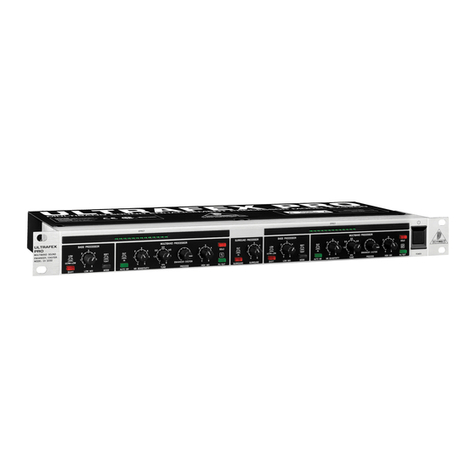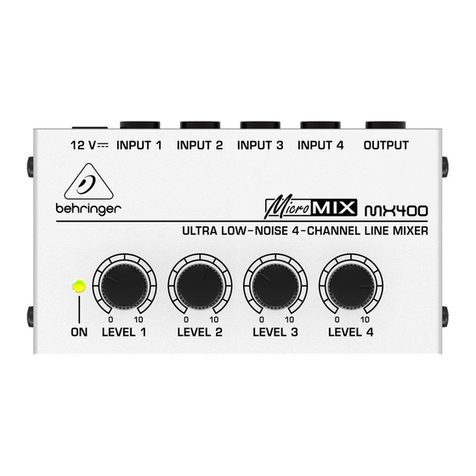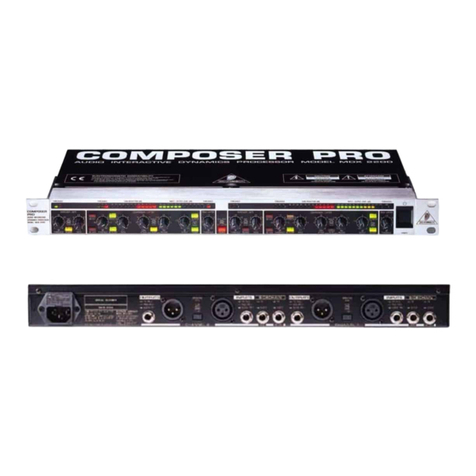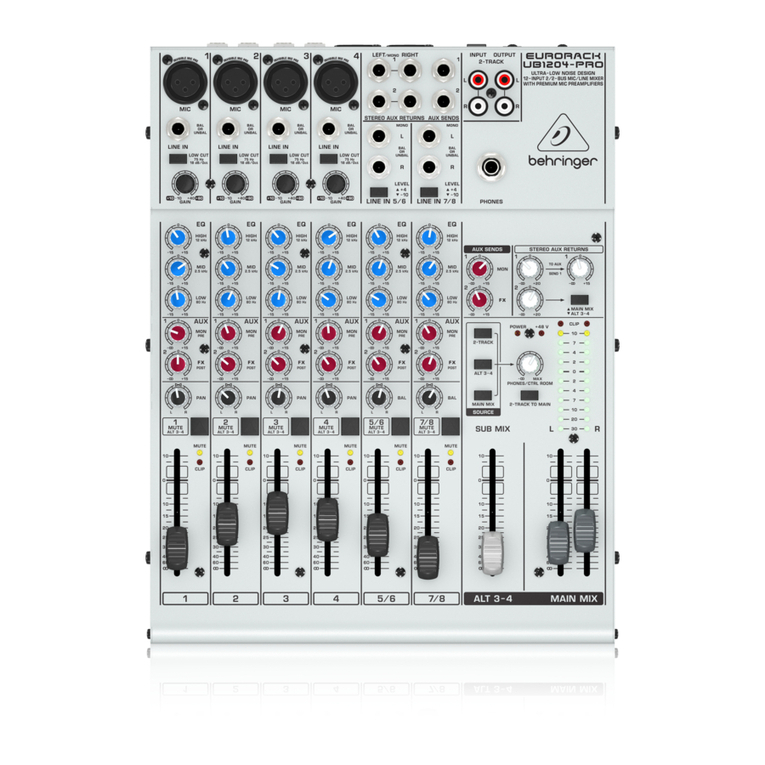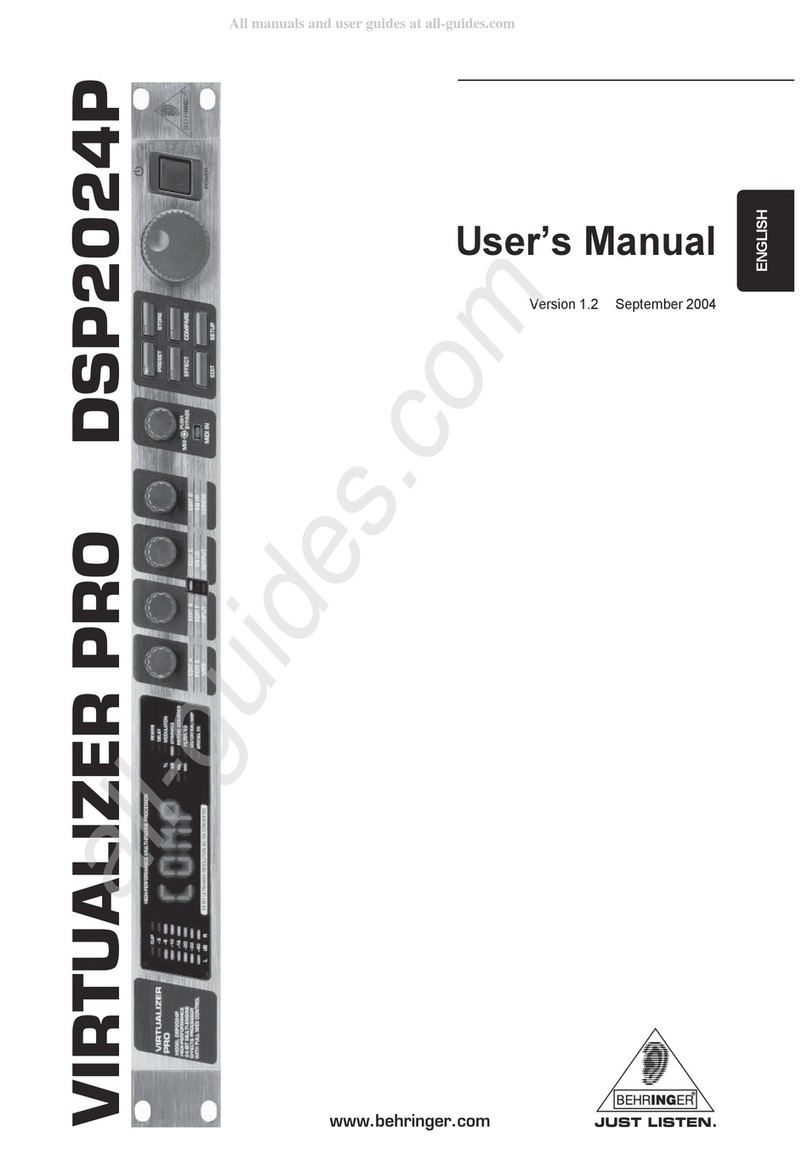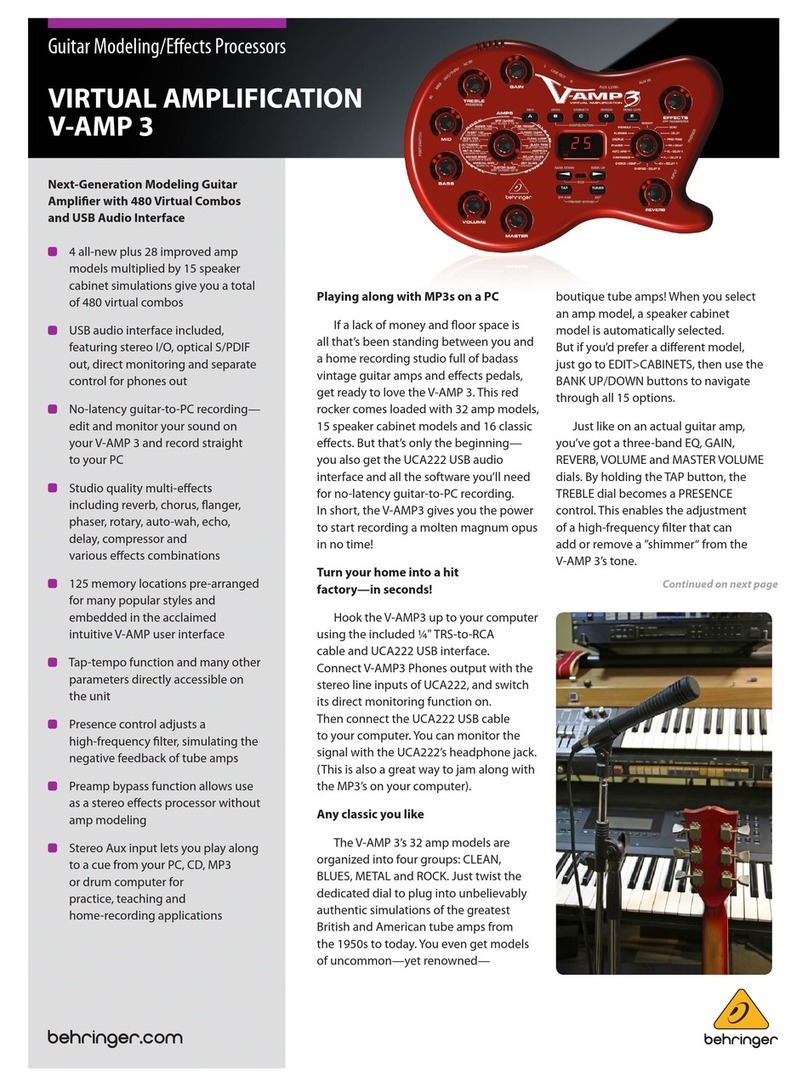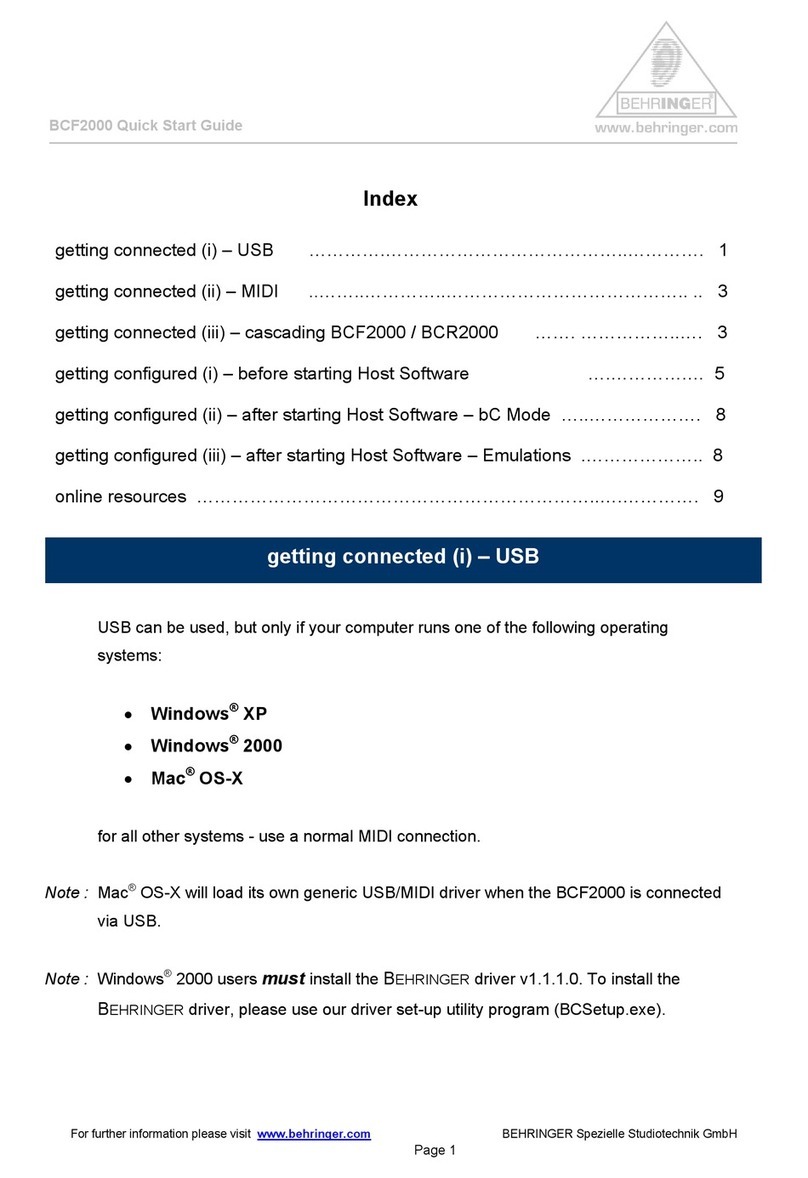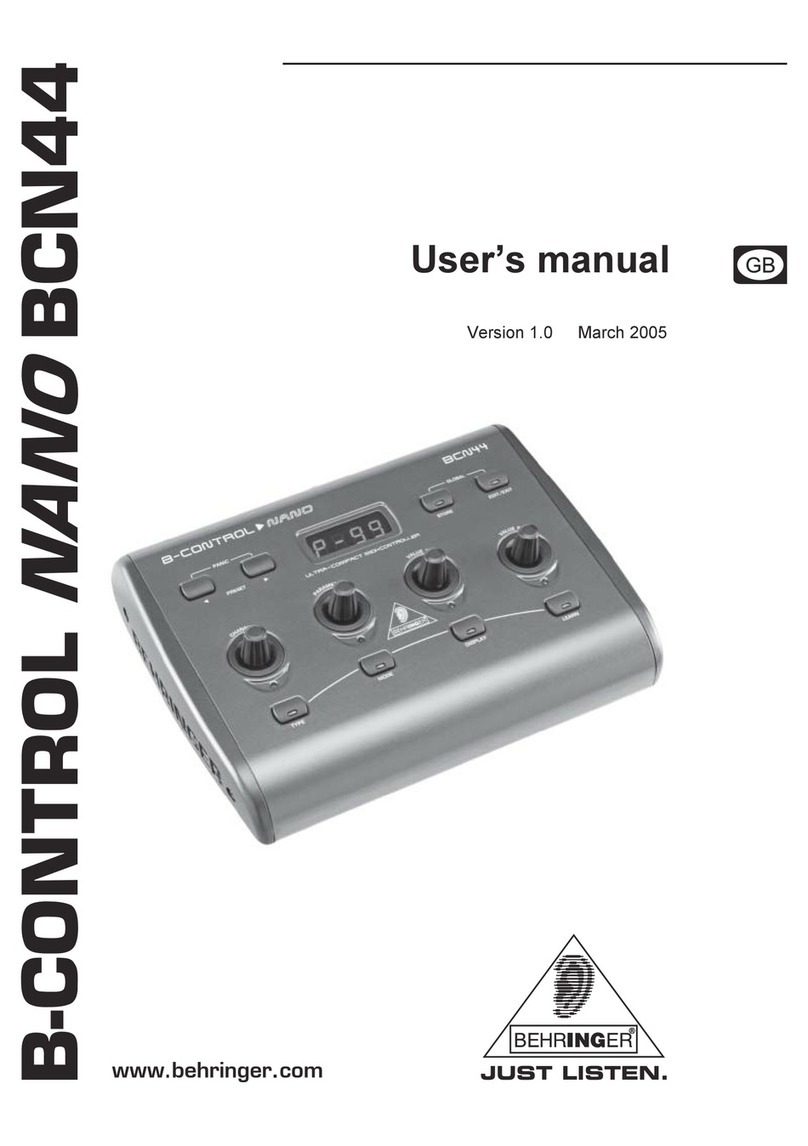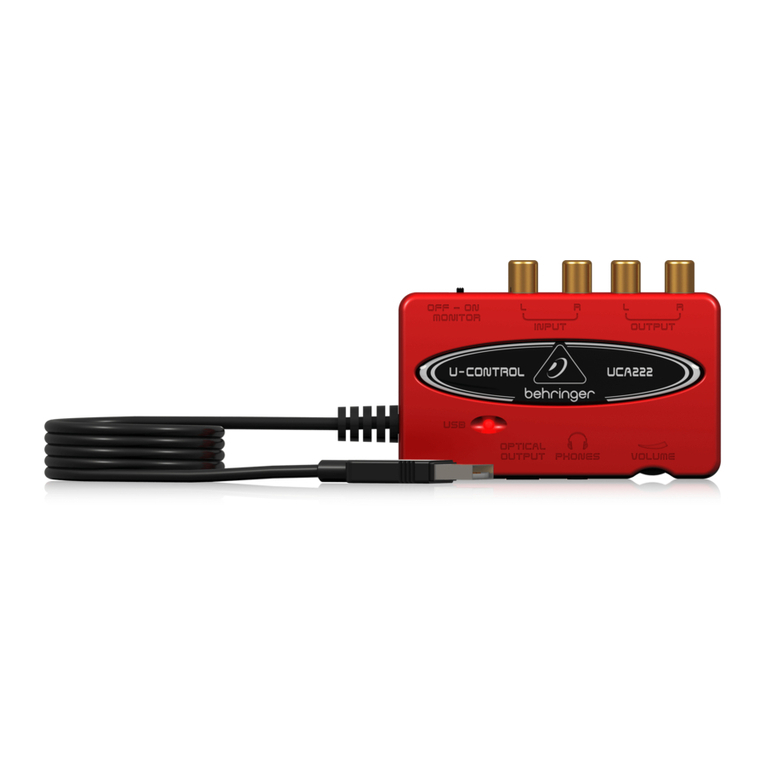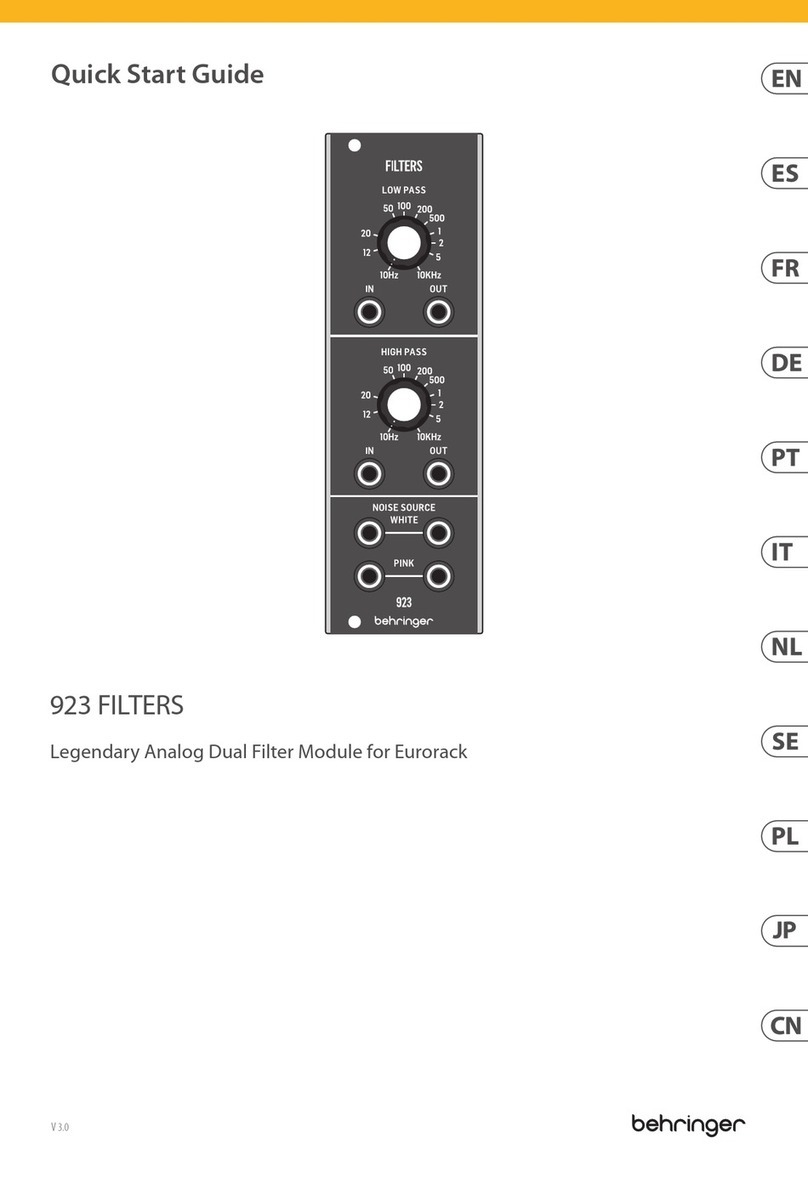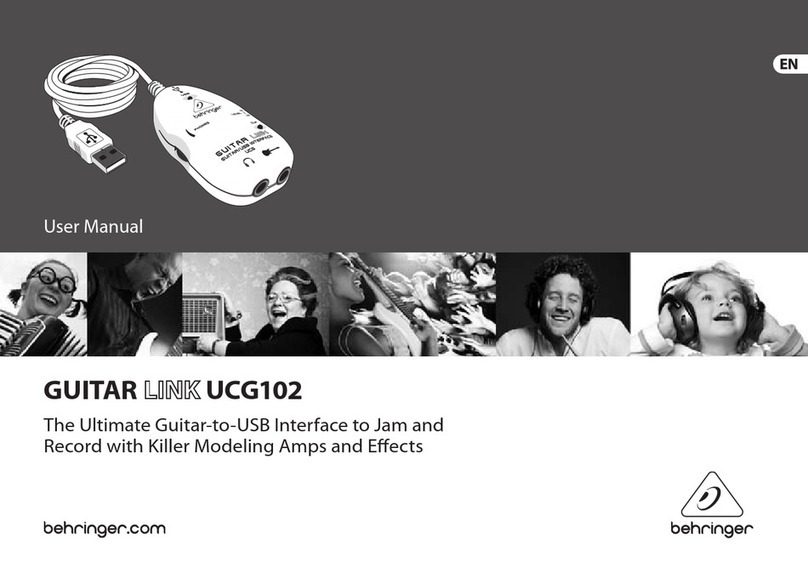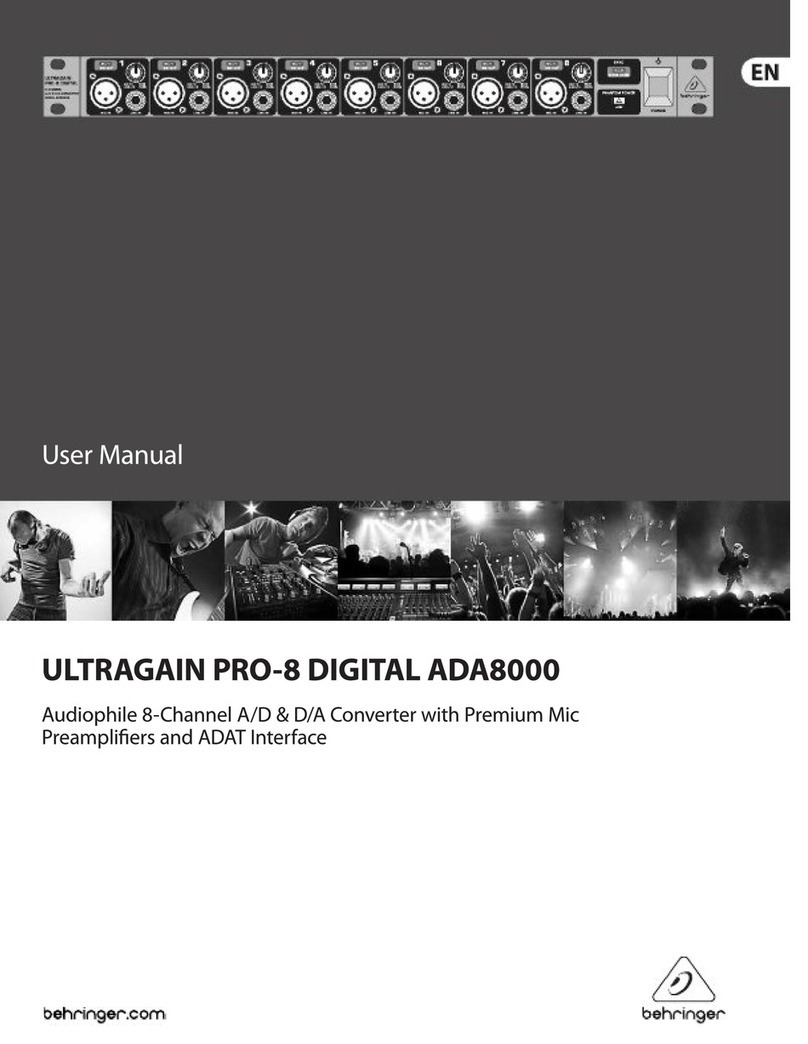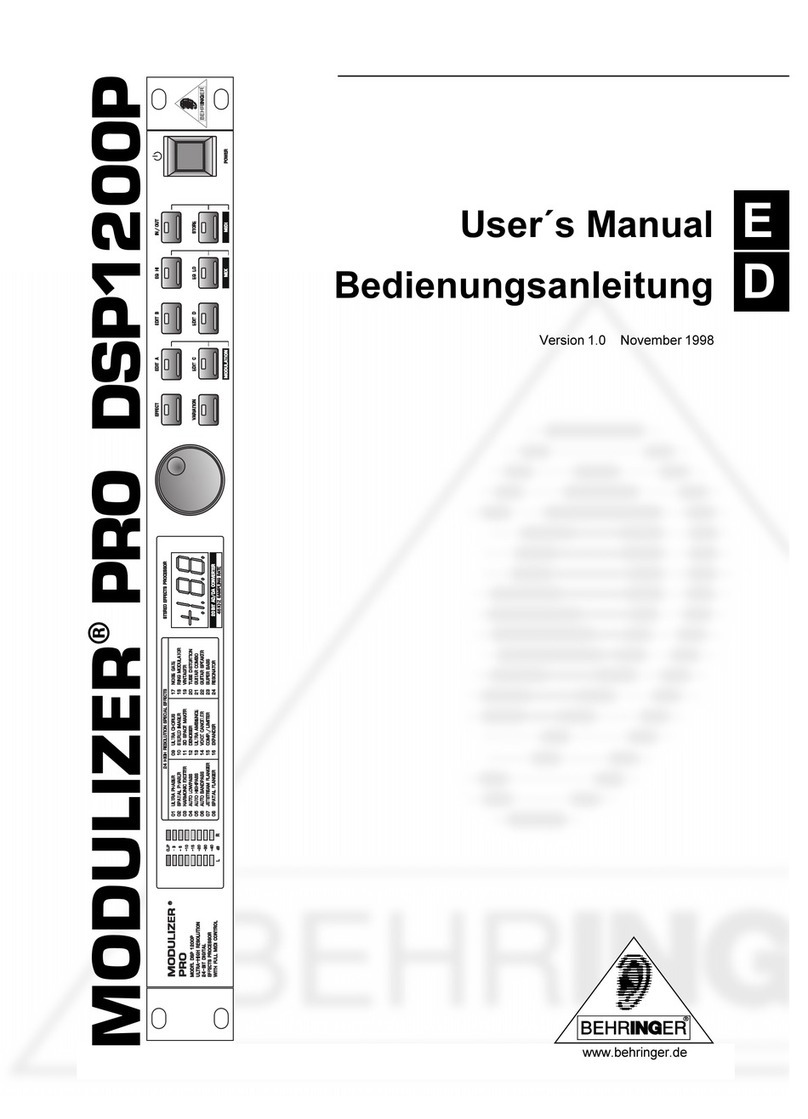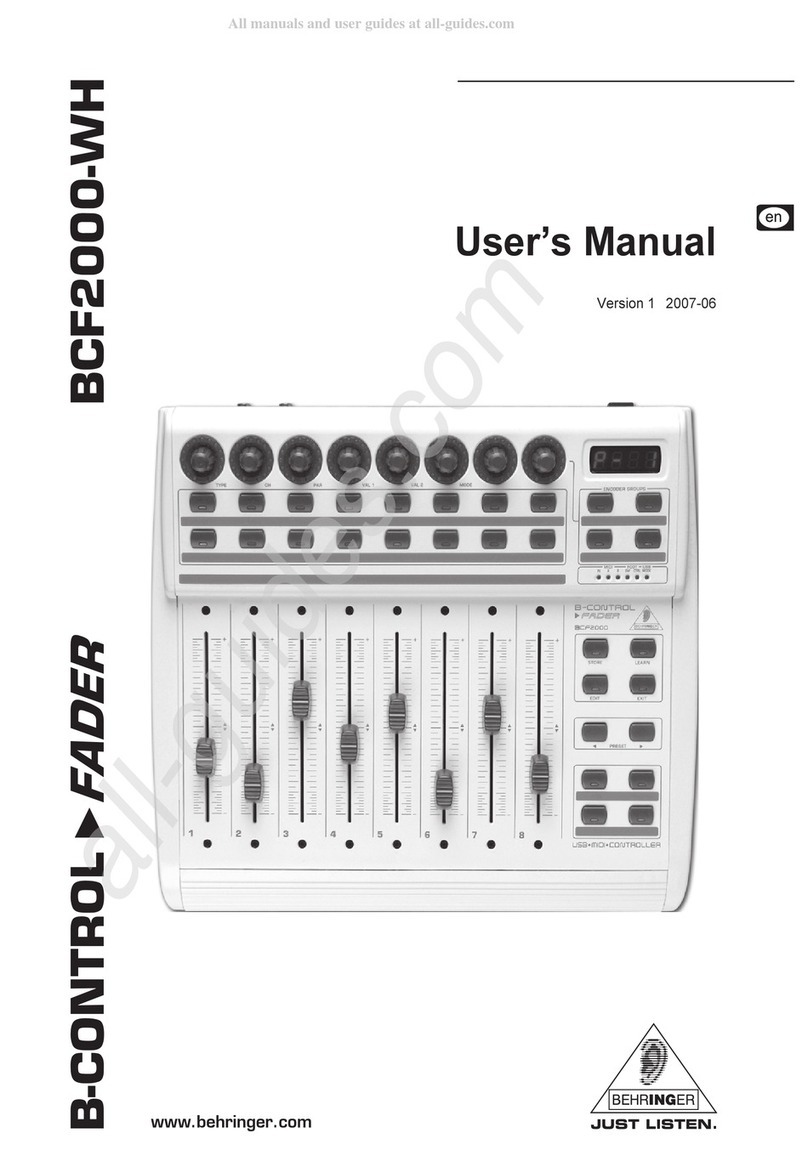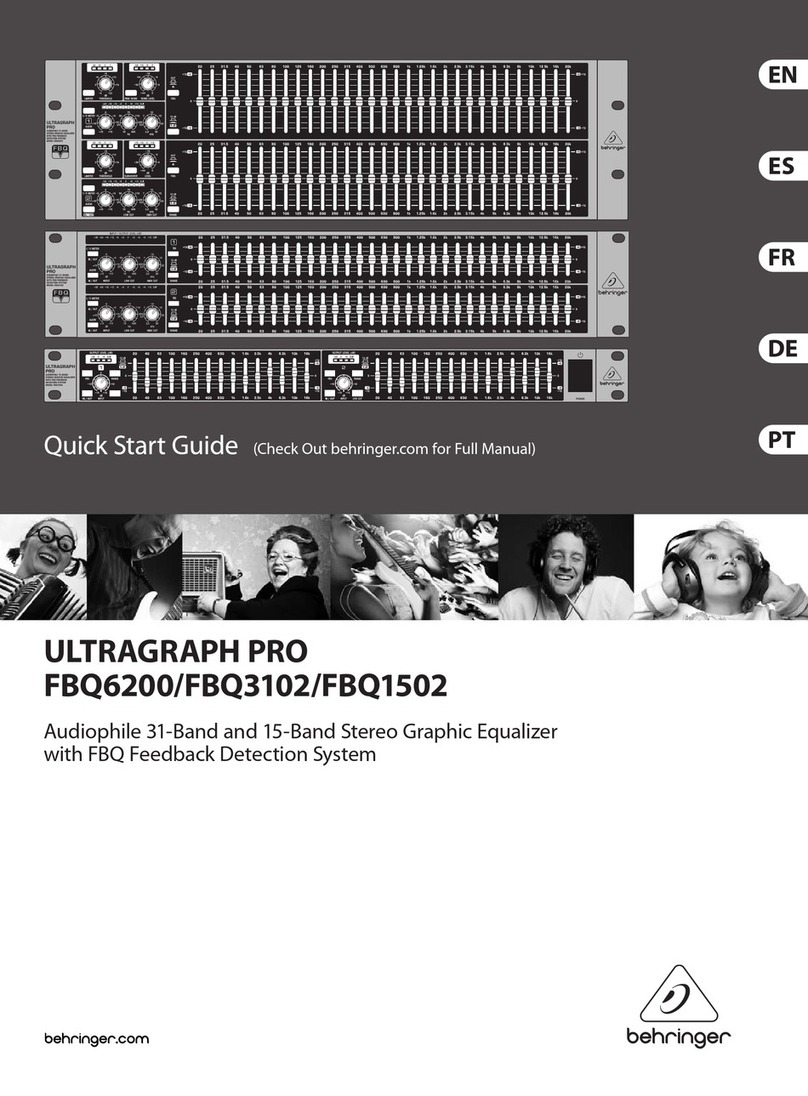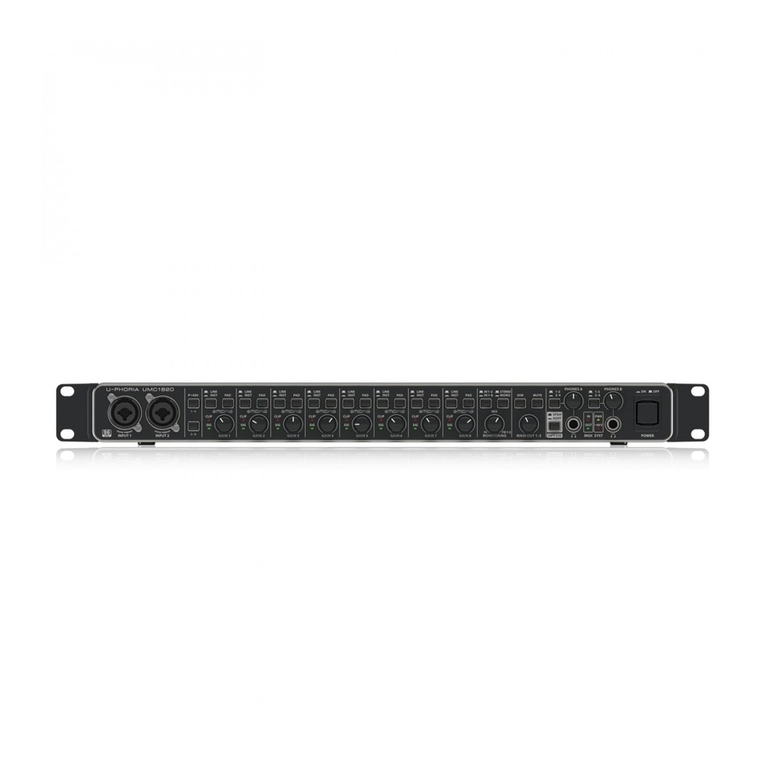10
V-AMP PRO
CLASSIC CLEAN: Back in the 80s, the Roland JC-120 was
the preferred sound of Buzzy Feiten (guitarist with the Dave
Weckl Band). The unique quality of this transistor amps sound is
the way its brilliance cuts through any mix. It is ideal for the New
Wave sound of the 80s that is making a come-back today. By the
way, the JC-120 was also popular among Fender Rhodes pianists.
BLACK TWIN: This simulation was modeled on a Fender
Blackface Twin from 1965. In the 60s this amp was used by
jazz, country and even rock guitarists. What was unique about
it was that it was exceptionally loud and was therefore mainly
used for live performances. The secret of the Blackface Twin
was that although you could play it extremely loud, the distortion
remained relatively low.
BRITISH BLUES: Modeled on the JTM 45, the first Marshall
amp ever. This, by the way, was Eric Claptons favorite amp
when he was with Cream. The JTM 45 was the forerunner of
many of Marshalls later amps with their distinctive, powerful
sound. Extreme gain settings produce a highly compressed and
really dirty sounding distortion. Combined with a 2 x 12" speaker
simulation it produces impressive Bluesbreaker sounds.
AND CUSTOM: This simulation is based on a 1965 Marshall
JTM 45 Bluesbreaker but has more flexibility of sound control.
Turn the GAIN control to the left and this simulation sounds like a
Marshall turn it to the right and it is more reminiscent of the
Budda.
BRITISH CLASS A: This simulation is modeled on the Vox
AC 30. This amp was originally designed in the 60s when
guitarists wanted amps with enhanced brilliance, a feature that
Vox successfully implemented by means of revolutionary bass
and treble controls. Brian May and U2s The Edge are probably
the best-known users of this sound.
NON TOP BOOST: This is a Vox AC 30 as used by Bryan
Adams in the recording studio. Unlike the well-known AC 30
with treble boost, the former amp version did not have this feature.
This simulation copies the original amps normal channel.
BRITISH CLASSIC: Based on a 1959 Marshall Plexi 100 Watt,
this amp is ideal for producing clean sounds. It was used by Jimi
Hendrix, Eric Clapton and Jeff Beck.
CLASSIC 50 W: This is also a Plexi, but we have extensively
widened its sound range. The sound controls on the original
Marshall Plexi 50 Watt hardly had any effect on the sound if
distortion was high.
BRITISH HI GAIN: Compare this model with a Marshall JCM
800. Although the original was renowned mainly for its distorted
sounds, this amp also sounds very good with low gain settings.
Its good at reproducing Steve Ray Vaughans and Michael
Landaus sounds. In distortion mode it sounds like Gary Moore in
his early days, but its also good for heavy metal.
BRITISH CLASS A 15 W: Another Vox model, based on the
first channel of an AC 15 from 1960. Unlike the AC 30 this amp
had only one 12" speaker, instead of two, and produced a
warmer sound. Tip: to make this simulation sound as authentically
as possible, leave the BASS and MID controls in mid-travel
position and vary the TREBLE control only.
RECTIFIED HI GAIN: This model is based on a 1994 Mesa
Boogie Dual Rectifier Trem-O-Verb featuring a modern, high-
gain sound that also comes over well in a band context. The tone
control is post-gain, which allows you to tailor distorted sounds
to great effect. This amp is perfect for heavy metal, but also for
Steve Lukather sounds. The best-known user of this amp is
Dream Theaters guitarist John Petrucci.
RECTIFIED HEAD: This simulation is modeled on a Mesa Boogie
Dual Rectifier top. Unlike the Trem-O-Verb, this amp produces a
more modern high-gain sound. The tone control is most effective
at high gain settings.
MODERN HI GAIN: Here, too, the tone control is post-gain,
allowing the extremely distorted sound to cut through the mix.
The MODERN HI GAIN sound is ideal for playing Grunge, but is
also used by guitarists such as Steve Vai and Joe Satriani.
Among others, Steve Lukather, Nuno Bettencourt and Steve Vai
have all popularized the Soldano sound. If youre playing a
Gibson Les Paul, MODERN HI GAIN sounds best when you
turn down the volume control on the guitar a little.
SAVAGE BEAST: Engl is well-known for amps that really cut
through. The Savage 120 in particular has built up a large
following among guitarists. For some time now Ritchie Black-
more has been an major endorser of this German company, and
Randy Hanson, the best Hendrix since Jimi, also swears by this
amp. The unique feature of the Savage is its extreme power and
is therefore highly popular with heavy metal guitarists. Silent
Force/Sinner guitarist Alex Beyrodt has been an enthusiastic
Engl user for years. An amp for making yourself heard!
FUZZ BOX: This sound is not actually based on any one amp,
but on a particular fuzz box. Jimi Hendrix was one of the first
guitarists to recognize the potential in this legendary broadband
transistor distortion. The humming distortion sound of the FUZZ
BOX has returned to popularity with Alternative Rock and Grunge.
CUSTOM HI GAIN: This sound goes back to a 1969 50-Watt
Marshall Plexi modified by Jose Arrendondo. Arrendondo was
none other than Eddie Van Halens guitar technician. The unique
features of this amp are its fine mid-range sounds and its ability
to produce the ultimate in gain without making the sound muddy.
Warning: highly addictive!
ULTIMATE V-AMP: From clean to brutal hi-gain, this brute
covers the entire range. The ULTIMATE V-AMP is basically a
souped-up rectifier amp.
ULTIMATE PLUS: Those who find the ULTIMATE V-AMP too
tame will find enough gain here for an overdose.
DRIVE V-AMP: This simulation is based on a more modern
high-gain lead amp producing a soft but precise sound with
plenty of drive, making it ideal for lead guitar work. The DRIVE
V-AMP is modeled on the Mesa Boogie Mark III.
CALIFORNIA DRIVE: Based on the Mesa Boogie Mark II c, this
is purely a simulation of its drive channeldefinitely the right
choice for Santana songs.
CRUNCH V-AMP: This amp is ideal for modern blues or jazz.
Its sound is not too subtle, but not in-your-face eitherits
crunchy, thats all.
CUSTOM DRIVE: This simulates the Dumble Overdrive
Specialan amp that was at the top of many guitarists wish-list
but beyond their financial means. Dumble amps are hand-made
and can be custom-built for the individual guitarist. What weve
done here is simulate the drive channel of one of these rare
Dumble amps.
CLEAN V-AMP: Here we have managed to simulate the sound
of a Roland JC-120 and comine it with our BRIT CLASSIC model.
The result is the brilliance of a transistor amp which, however,
features the cutting power of a Marshall Plexi. Turn the GAIN
control clockwise and the Marshall comes in.
CALIFORNIA CLEAN: This model is based on the clean channel
of the Mesa Boogie Mark II c. It sounds a little like a Fender, but
has more of a punch in the mid-range.
TUBE PREAMP: Sound engineers were quick to recognize
the appeal of tubes. They used tube amps to add warmth to all
kinds of sounds. This amp model is not only for refining guitar
sounds. Try putting a vocal track through the V-AMP PRO and
give it the finishing touch with TUBE PREAMP.
CUSTOM CLEAN: This simulation is of the clean channel on
our Dumble amp.
5. AMP/SPEAKER SIMULATION
DATA-MANFULL_V-AMP PRO_ENG_Rev_A.PMD 16.09.2002, 14:1510
